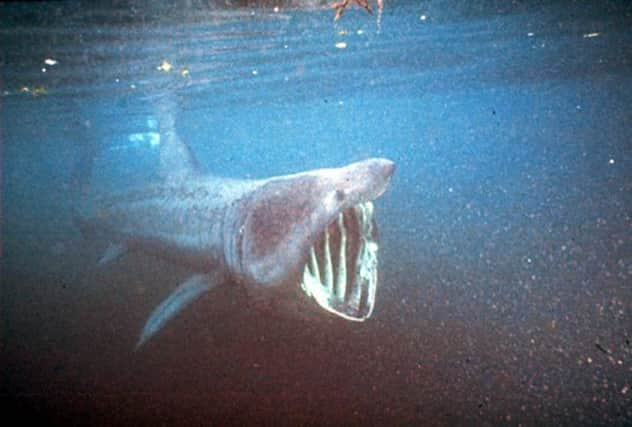Leaders: Jaws shouldn’t drop at plans to save shark


It was not all that long ago that the only organised view on basking sharks off the west coast of Scotland was a commercial imperative to catch as many as possible and kill them for their oil and other saleable constituent parts.
But times and attitudes have changed. And so too has our appreciation of the richness and diversity of our marine wildlife and the value in extending both the range of species to be protected and the number of protected areas.
Advertisement
Hide AdAdvertisement
Hide AdDespite its large appearance, large mouth, numerous teeth and intimidating name, the basking shark is not aggressive and is harmless to humans. It is the second-largest living fish and is to be found in all the world’s temperate oceans. However, over-exploitation has reduced its populations to the point where some have disappeared and others need protection. Sightings around the Scottish coast are reported to be at their lowest for some considerable time.
Overall, our waters support a huge diversity of marine life and habitats, with around 6,500 species of plants and animals. They are among the richest in Europe for marine mammals. Our seas are the fourth largest in the European Union and support many habitats including cold water coral reefs, 22 individual species of whales and dolphins and almost half of the EU’s breeding seabirds.
So the proposals announced yesterday by the Scottish Government to establish a network of 30 marine protected areas around our coastline, together with four new areas for the protection of basking sharks, whales and dolphins and 14 special protection areas for seabirds, are to be broadly welcomed. And flameshell beds, feather stars, the common skate and the ocean quahog will be protected alongside sandeels, a staple food of sea birds and mammals, and the black guillemot.
Approximately 20 per cent of Scotland’s seas are now in marine protected areas and the North East Faroe Shetland Channel is estimated to be the largest MPA in the EU. The proposals have been hailed as a landmark development by environmentalists and marine campaigners, and ones that recognise the importance of our sea life after years of under-appreciation and decline. They will also be welcomed by the tourist industry as another feature of Scotland’s heritage attractions.
However, the powerful Scottish Fishermen’s Federation lobby does not appear so convinced and has called for a period of assessment to see how the existing system is delivering ecosystem benefits before creating more MPAs. Environment secretary Richard Lochhead will need to secure comprehensive support to ensure these far-sighted proposals succeed into legislation.
Opening our hearts and wallets
We may get inured to news stories mentioning large sums of money, but the £3.1 million raised in the Commonwealth Games’ opening ceremony bears thinking about. The organisers’ tie-up with Unicef was a bold and innovative idea which has well and truly paid off. The money raised will make a positive impact on the lives of some of the most deprived children in the world.
That very professionally done fund-raising appeal (the announcing of the next teams in to Celtic Park from celebrities in very remote parts of the world was something to marvel at) provided a sobering counterpoint to some of the other more surreal moments.
Scottie dogs and dancing teacakes, not to mention John Barrowman in a purple tartan suit being carried through some very plastic purple heather, left no cliché unturned, but it was delivered with that tongue-in-cheek self-mocking humour for which Glasgow, and Scotland, are renowned.
Advertisement
Hide AdAdvertisement
Hide AdMuch of this was high-risk for the organisers, but it worked. For all the self-mockery – indeed, rather because of it – the opening ceremony left Scots here and abroad with a wry smile and a tingle of national pride at this display. The giant video screen, the biggest in Europe, worked to colourful effect throughout and was tribute in itself to our creative skills and ability to pull off an IT spectacular.
But it was in the range and depth of Scottish talent in music and the arts – from classical violinist Nicola Benedetti through Scottish Ballet, Susan Boyle to the raucous Rod Stewart – that reminded the world of what we have given to the world – and handsomely continue to give.